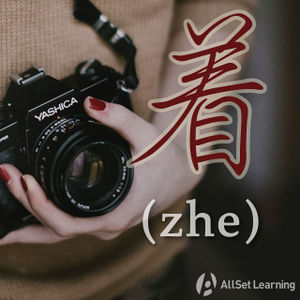Difference between revisions of "Complement "-zhao""
| Line 8: | Line 8: | ||
===Structure=== | ===Structure=== | ||
| − | All you have to do is put 着 before the verb. Remember that it should be something that you can reach. | + | All you have to do is put 着 before the verb. Remember that it should be something that you can reach. It could be a purpose, or it can be producing an outcome or an influence. |
<div class="jiegou"> | <div class="jiegou"> | ||
Revision as of 10:04, 5 June 2013
When used as a resultative complement, 着 (zháo) expresses that the action has reached it's purpose or has had an outcome. It can also be used as a potential complement, meaning "able to".
Contents
Resultative Complement
Structure
All you have to do is put 着 before the verb. Remember that it should be something that you can reach. It could be a purpose, or it can be producing an outcome or an influence.
Verb + 着
Examples
- 宝宝 刚 睡 着。
- 你 的 手机 找 着 了 吗?
- 火鸡 买 着 了 吗?
- 你 看 着 他 了 吗?在 哪儿?
Potential Complement
Structure
Verb + 得/不 + 着
When used with 得 (or 不) 住 functions as a potential complement , and denotes that one's one's ability is up (or not) to the task in question. This is like saying "(verb) able to reach" or “(verb) not able to reach"
Examples
- 晚上 我 睡 不 着 的 时候 就 看书。
- 我 的 手机 找 不 着 了。
- 这么 晚 了,能 买 得 着 吗?
- 你 看 得 着 他 吗?他 在 哪儿?



